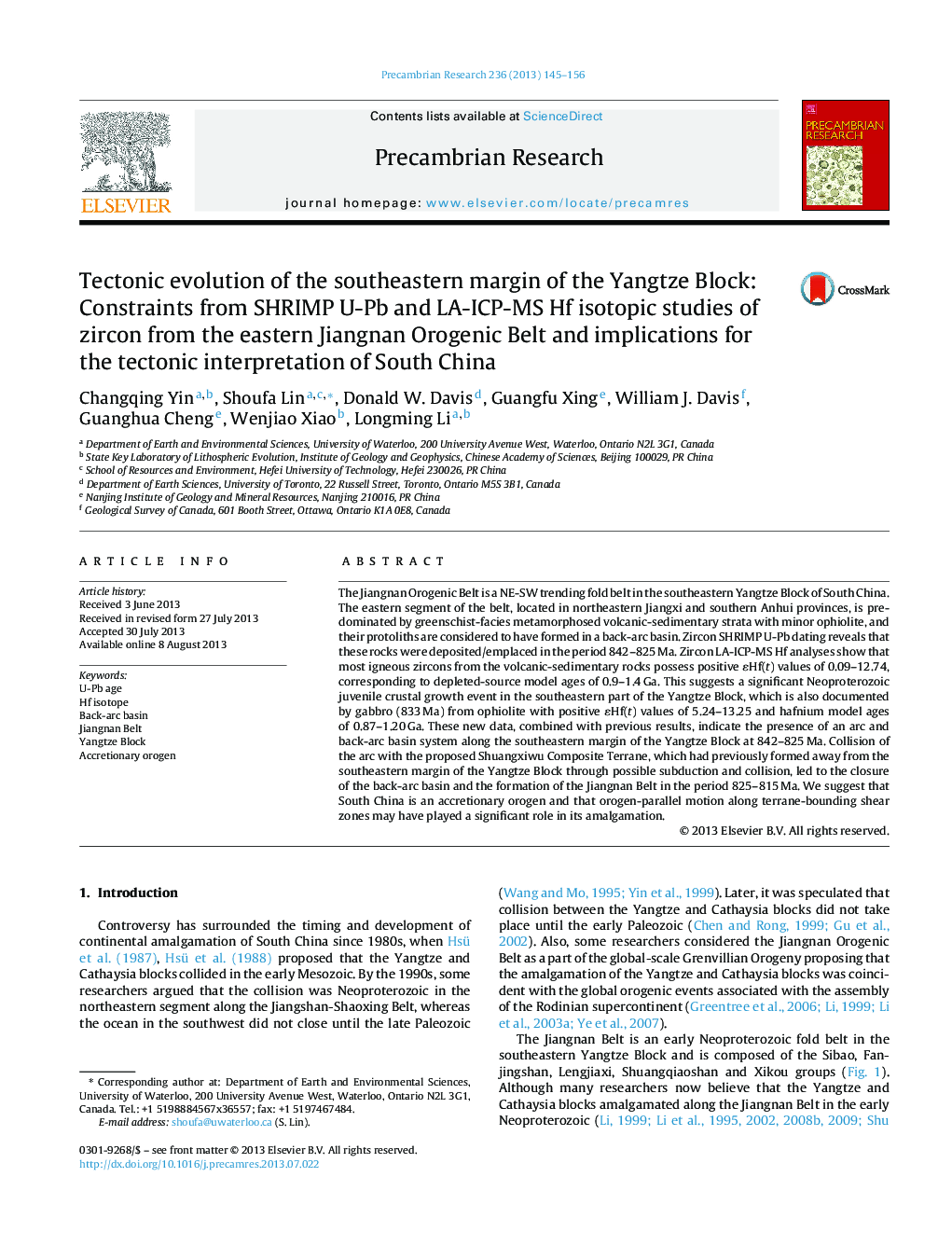| کد مقاله | کد نشریه | سال انتشار | مقاله انگلیسی | نسخه تمام متن |
|---|---|---|---|---|
| 4723171 | 1639638 | 2013 | 12 صفحه PDF | دانلود رایگان |

• A back-arc basin developed along the southeastern Yangtze Block at 842–825 Ma.
• Neoproterozoic juvenile crustal growth in the southeastern Yangtze Block.
• Orogen-parallel motion played a significant role in amalgamation of South China.
The Jiangnan Orogenic Belt is a NE-SW trending fold belt in the southeastern Yangtze Block of South China. The eastern segment of the belt, located in northeastern Jiangxi and southern Anhui provinces, is predominated by greenschist-facies metamorphosed volcanic-sedimentary strata with minor ophiolite, and their protoliths are considered to have formed in a back-arc basin. Zircon SHRIMP U-Pb dating reveals that these rocks were deposited/emplaced in the period 842–825 Ma. Zircon LA-ICP-MS Hf analyses show that most igneous zircons from the volcanic-sedimentary rocks possess positive ɛHf(t) values of 0.09–12.74, corresponding to depleted-source model ages of 0.9–1.4 Ga. This suggests a significant Neoproterozoic juvenile crustal growth event in the southeastern part of the Yangtze Block, which is also documented by gabbro (833 Ma) from ophiolite with positive ɛHf(t) values of 5.24–13.25 and hafnium model ages of 0.87–1.20 Ga. These new data, combined with previous results, indicate the presence of an arc and back-arc basin system along the southeastern margin of the Yangtze Block at 842–825 Ma. Collision of the arc with the proposed Shuangxiwu Composite Terrane, which had previously formed away from the southeastern margin of the Yangtze Block through possible subduction and collision, led to the closure of the back-arc basin and the formation of the Jiangnan Belt in the period 825–815 Ma. We suggest that South China is an accretionary orogen and that orogen-parallel motion along terrane-bounding shear zones may have played a significant role in its amalgamation.
Journal: Precambrian Research - Volume 236, October 2013, Pages 145–156